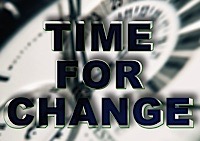 As millions of U.S. travelers get ready for the busiest flying day of the year, scientists still can't agree over whether the dose of radiation delivered by so-called backscatter machines is significantly higher than the government says. This is despite months of public debate between the White House, the U.S. Food and Drug Administration, and independent scientists.
As millions of U.S. travelers get ready for the busiest flying day of the year, scientists still can't agree over whether the dose of radiation delivered by so-called backscatter machines is significantly higher than the government says. This is despite months of public debate between the White House, the U.S. Food and Drug Administration, and independent scientists.
Full-body scanners have been installed at many U.S. airports. The machines use either low-energy, millimeter wavelength radiation, which is harmless, or X-rays, which can potentially be hazardous. X-rays can ionize atoms or molecules, which can lead to cancerous changes in cells. Even if the government has significantly underestimated the dose of radiation delivered by an X-ray scanner, it is likely to be relatively small.
innovation DAILY
Here we highlight selected innovation related articles from around the world on a daily basis. These articles related to innovation and funding for innovative companies, and best practices for innovation based economic development.
Thinking Outside the In-box
 Search the Internet, and you'll find hundreds of applications designed to help you collaborate with other people more effectively. But examine your own habits, and you'll most likely find that you use just one piece of software for that purpose: an e-mail client.
Search the Internet, and you'll find hundreds of applications designed to help you collaborate with other people more effectively. But examine your own habits, and you'll most likely find that you use just one piece of software for that purpose: an e-mail client.
You're not alone. A recent Forrester Research study found that 83 percent of business users typically send e-mail attachments to colleagues rather than using collaboration software. According to a recent survey by technology consulting company People-OnTheGo, the average information worker spends 3.3 hours a day dealing with e-mail, and 65 percent of such workers have their e-mail client open all the time.
Is It Where You’re From or Where You’re At? How Cities Impact The Black Creative Economy
 Mai Perkins remembers attending a concert at Central Park SummerStage with Cassanda Wilson, partly because of an observation the jazz singer made about Perkins’ new city. “She made a comment that I thought was so applicable to the city’s diversity. She said, ‘California has landscape, New York has people-scape!’” It was a sentiment that the native Angeleno could relate to.
Mai Perkins remembers attending a concert at Central Park SummerStage with Cassanda Wilson, partly because of an observation the jazz singer made about Perkins’ new city. “She made a comment that I thought was so applicable to the city’s diversity. She said, ‘California has landscape, New York has people-scape!’” It was a sentiment that the native Angeleno could relate to.
Perkins is no different from the millions who migrate across the country for school or for a new job. She moved to Washington DC over ten years ago to attend Howard University and ended up in New York City to pursue her career as a writer.
How to Be a Greener Business for the Holidays
 It’s not just our waistlines that get bigger around the holidays – so do our trash cans and energy bills. Think of all the wrapping paper, plastic bags, packaging and decorations that businesses use around the holiday season.
It’s not just our waistlines that get bigger around the holidays – so do our trash cans and energy bills. Think of all the wrapping paper, plastic bags, packaging and decorations that businesses use around the holiday season.
It’s the perfect time to try and cut down on some of that environmental toll.
Here are several ways businesses can mix environmental sustainability into the holiday spirit:
1. Use 100 percent post-consumer wrapping paper. If you wrap gifts for customers or clients, at least use 100 percent post-consumer wrapping paper imprinted with soy-based or other organic inks. Post-consumer paper is recycled waste paper, meaning trees weren’t cut down to make the wrapping paper. Another idea for small retailers: Put customers’ purchases in decorative recycled-paper gift bags that can be reused.
Big-Company Executives Rarely Survive in a Startup
 Mid-level or even top executives who “grew up” in large companies often look with envy at startups, and dream of how easy it must be running a small organization, where you can see the whole picture and it appears you have total control. In reality, very few executives or professional stars from large corporations thrive in the early-stage startup environment.
Mid-level or even top executives who “grew up” in large companies often look with envy at startups, and dream of how easy it must be running a small organization, where you can see the whole picture and it appears you have total control. In reality, very few executives or professional stars from large corporations thrive in the early-stage startup environment.
The job of a big-company executive is very different from the job of a small-company executive. The culture is different, the skills required are different, and the experience from one may be the exact opposite of what you need for the other. Michael Fertik, in a recent Harvard Business Review article, summarized the key differences for people trying to survive the transition:
- Forget influence- and empire-building. Establishing and wielding influence may help you move resources in your direction in a large business. Similarly, acquiring a larger footprint of direct reports is often a sign of success at large businesses. These instincts kill you in a small company, where requiring more resources is a negative.
Clusters Are Obsolete
 Are Clusters or cluster initiatives really adding any tangible value to firms? Are they obsolete? Maybe not yet, but I believe if the present policy tools and institutional frameworks are not reformed they may very well soon become so. In the following blog I would like to focus on three areas that have not been given enough importance by policy makers: focus beyond geographies, new clusters and cluster performance.
Are Clusters or cluster initiatives really adding any tangible value to firms? Are they obsolete? Maybe not yet, but I believe if the present policy tools and institutional frameworks are not reformed they may very well soon become so. In the following blog I would like to focus on three areas that have not been given enough importance by policy makers: focus beyond geographies, new clusters and cluster performance.
‘Clusters are geographic concentrations of interconnected companies, specialised suppliers, service providers, firms in related industries, and associated organisations (such as universities, standard agencies, trade associations) in a particular field linked by commonalities and complementarities. There is competition as well as cooperation.’ This is how Michael Porter defined clusters in the 80′s making them fashionable.
Others talked about them long before Prof. Porter. For example Marshall in 1920′s defined clusters as a concentration of a large number of similar businesses in a locality. The geographical aspect hasn’t really changed until now (Guiliani (2005) defines clusters as a ’geographical agglomeration of firms operating in the same industry). A lot has been said about how this agglomeration impacts economic growth. Nonetheless subscribing to Martin and Sunley’s critique of clusters (2003); I would argue there exists no direct causality.
The Future of Des Moines: Striking up a creative-class border war
 What if we: Strike up a sports-style rivalry with Omaha that played out in a creative-class border war. Des Moines and Omaha could alternate hosting challenges and bus groups of young professionals between the cities for events that highlight the cultural talents and nightlife of both places. This rivalry and sense of competition could also spur more creativity and progress within the two cities' scenes.
What if we: Strike up a sports-style rivalry with Omaha that played out in a creative-class border war. Des Moines and Omaha could alternate hosting challenges and bus groups of young professionals between the cities for events that highlight the cultural talents and nightlife of both places. This rivalry and sense of competition could also spur more creativity and progress within the two cities' scenes.
"I'd like to also see a spirit of debate at (art) events," said Des Moines artist Cat Rocketship, who brought up the need for more art criticism at a roundtable discussion we held in August to discuss "big ideas" for the future of Des Moines. In recent months, we've looked at five of the ideas to come from that discussion between local young professionals — this being the fifth and final idea.
You think the iPad is pricey? First-ever Apple computer sells for $210,000
 It is true: People will pony up remarkable amounts of money for Apple’s products.
It is true: People will pony up remarkable amounts of money for Apple’s products.
This is evident by the lines of pundits that snake around Apple Stores the world over whenever a new, sleek Apple product hits the shelves. But yesterday an Italian businessman and collector by the name of Marco Boglione took it to the next level by shelling out some serious cash at the famous Christie’s auction house in London for one of the very first Apple personal computers ever made, the Apple I. Boglione acquired the computer at a price tag of £133,250, or roughly $210,000. Original price? $666.66.
The computer, which is one of only 200 models ever produced, was originally built and marketed by Steves Jobs and Wozniak in 1976. When the Apple I was introduced, the computer had a fully assembled motherboard and was ready to use from the box – provided the user had a keyboard, a power supply and a display.
17 words and phrases to avoid in your business plan
 We all have words that make us cringe. That’s especially true in the investment community.
We all have words that make us cringe. That’s especially true in the investment community.
Generally, I can tell a few lines into a business plan if a company just doesn’t “get it”. Sometimes, it’s blatant – like the lack of a clear mission statement. Other times, it’s something more gut-based, like the use of quotation marks as I did at the top of the paragraph (it’s too cute for a serious business proposal).
There are some words and phrases that are real showstoppers, though – and if you’re using them, you’ll need to rethink your pitch before approaching a possible source of financing. They not only fail to sell your story. They often end up having the exact opposite effect.
The Mobile Web Takes Over for Generation Y
 Mobile browser maker Opera has released its latest report on the mobile Web and this time it's come to a conclusion you'll arrive at soon enough as the family gathers for the holidays and everyone under 30 has their nose buried in a mobile phone - "Generation Y chooses the mobile Web".
Mobile browser maker Opera has released its latest report on the mobile Web and this time it's come to a conclusion you'll arrive at soon enough as the family gathers for the holidays and everyone under 30 has their nose buried in a mobile phone - "Generation Y chooses the mobile Web".
In fact, most 18-27 year-olds surveyed in the report user their mobile phones to browse the Web more often than a desktop or laptop. The report offers a number of telling statistics on where the world is headed and it all boils down to one word - mobile.
According to Opera, the largest demographic of Opera users are between the ages of 18- and 27-years old in 13 countries representing major and emerging markets. The report highlights show mobile phones becoming ubiquitous in this generation, with definite variations:
- Almost 90% of respondents in the United States aged 18-27 have used their phones to share pictures. Of the profiled countries, Vietnam -- at 67% -- had the lowest use of mobile phones to share pictures.
- Respondents in the United States are least likely to have asked someone out on a date via SMS (44%). Respondents in China (84%), Germany (84%) and Vietnam (83%) are most likely to have used SMS texts to ask someone out on a date.
Is The Search For The Startup Hero Holding Back Startups?
 I had the privilege of joining the Monaco Media Forum in Monaco recently. It was a fairly star-studded event: opened and closed by Prince Albert, dinner at Hotel de Paris, Monte Carlo, great hotel etc. But to be honest it was the debates in the conference room that were the best thing about the event, and I had a lot of fun on my closing panel of the week: “Silicon Envy: Will Europe ever build the next new media giant?”
I had the privilege of joining the Monaco Media Forum in Monaco recently. It was a fairly star-studded event: opened and closed by Prince Albert, dinner at Hotel de Paris, Monte Carlo, great hotel etc. But to be honest it was the debates in the conference room that were the best thing about the event, and I had a lot of fun on my closing panel of the week: “Silicon Envy: Will Europe ever build the next new media giant?”
Now, admittedly with such a subject we had to run through the usual arguments, which I hope are now well known. Silicon Valley is the product of over 50+ years of history, Europe is only just getting going, America has one big unified market, Europe is splintered into many etc etc etc.
$1.3 Billion Oracle-SAP Verdict Is Biggest Ever For Software Piracy
 After an 11 day trial whose highlights included the hilarious “Where In The World Is HP CEO Leo Apotheker?“ the Oracle vs. SAP intellectual property case has finally ended today in a whopping $1.3 billion dollar verdict, “The largest amount ever awarded for software piracy” according to Oracle co-president Safra Catz.
After an 11 day trial whose highlights included the hilarious “Where In The World Is HP CEO Leo Apotheker?“ the Oracle vs. SAP intellectual property case has finally ended today in a whopping $1.3 billion dollar verdict, “The largest amount ever awarded for software piracy” according to Oracle co-president Safra Catz.
Before the trial, SAP admitted that its 2005 acquisition TomorrowNow pirated Oracle’s intellectual property and used it in order to pilfer customers from Oracle. Evidence presented during the trial showed that key SAP executives were aware of what was happening. ““For more than three years, SAP stole thousands of copies of Oracle software and then resold that software and related services to Oracle’s own customers,” said Catz.
How to Ace a Job Interview | The Body Language of Business
Even the tiniest gesture can say a lot about you. Carol Kinsey Goman, author of “The Nonverbal Advantage,” explains how to use body language to make a positive first impression at your next job interview.
Happy Thanksgiving!!!

From the teams of Innovation America and the Delmarva Group, Richard Bendis and JT Koffenberger wish you all a Happy and Safe Thanksgiving!!!
- The first Thanksgiving celebration can be traced back to the Plymouth Pilgrims in the fall of 1621.
The celebration lasted for three days and included games and food. - The first Thanksgiving feast was held to thank the Lord for sparing the lives of the survivors of the Mayflower, who landed at Plymouth Rock on December 11, 1620. The survivors included four adult women and almost forty percent children.
- The Wampanoag chief Massasoit and ninety of his tribesmen were also invited to the first thanksgiving feast.
- Governor William Bradford invited them for helping the Pilgrims survive and teaching them the skills of cultivating the land.
- There were more Native Americans present than Pilgrims, 90 to 53.
- President George Washington.proclaimed the first 'National Day of Thanksgiving' in 1789.
- Abraham Lincoln made Thanksgiving a national holiday in his proclamation on October 3, 1863.
- The furcula of the turkey is used in a good luck ritual on Thanksgiving Day and has also been called a wishbone or merrythought.
- The Netherlands and Canada also have a Thanksgiving Day.
Survey Says: More Than Half Of You Will Be Checking Your Email Over The Holidays
 We know that email has done away with the nine to five job but does anyone ignore emails over holidays like Christmas and Thanksgiving anymore? A new study by email software company Xobni suggests that going completely offline from email over the holidays may also be a thing of the past. According to the survey, 59 percent of U.S. working adults will check work email over holidays.
We know that email has done away with the nine to five job but does anyone ignore emails over holidays like Christmas and Thanksgiving anymore? A new study by email software company Xobni suggests that going completely offline from email over the holidays may also be a thing of the past. According to the survey, 59 percent of U.S. working adults will check work email over holidays.
Of the survey respondents over half (55%) check work email at least once a day and more than one in four (28%) do so multiple times throughout the day. The data also showed that 79 percent of those that check email while on holiday stated that they have received a work-related email from a colleague or client on holidays.
THE ONLY IMPORTANT E-MAIL TO CHECK ON HOLIDAYS IS innovationDAILY........:).......HAPPY THANKSGIVING.......RICH BENDIS
There’s No Place like Home for the Holidays (or for a Successful Social Media Strategy)
 A question at my recent social media strategy for non-profits training presentation at the Topeka Community Foundation was what steps one, two, and three should be when just starting developing a social media strategy.
A question at my recent social media strategy for non-profits training presentation at the Topeka Community Foundation was what steps one, two, and three should be when just starting developing a social media strategy.
Interestingly, the person asking the question speculated on the answer and was absolutely correct:
- Start by making sure your home base, your own website, is fantastic before you focus on establishing cool outposts on popular social networks where your target audience spends time.
This idea about fixing up your home was highlighted in the recent post on similarities in dating advice and social media strategy. You want to make sure you spruce up your home so that as a relationship which started someplace else advances, you have an attractive, welcoming place to invite someone to get to know each other better.

 There used to be considerable interest in what employees thought. But as the economy tightened up, downsizing and rightsizing occurred.
There used to be considerable interest in what employees thought. But as the economy tightened up, downsizing and rightsizing occurred.
 A lot has changed since the last time Bloomberg Businessweek ranked international full-time MBA programs. In Europe and Canada, placement rates and starting salaries for newly minted MBAs took a major hit, then began the slow process of recovery.
A lot has changed since the last time Bloomberg Businessweek ranked international full-time MBA programs. In Europe and Canada, placement rates and starting salaries for newly minted MBAs took a major hit, then began the slow process of recovery.
 New York startup
New York startup  You may think these ideas are hare-brained, but these entrepreneurs have tapped into their own kooky niches.
You may think these ideas are hare-brained, but these entrepreneurs have tapped into their own kooky niches.
